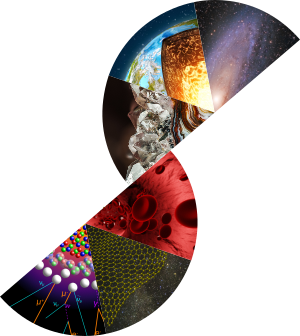Composites have attracted attention during the past decades because of their interesting properties unlike their individual elements. Among them, polymer-metal composites showed good optical and electrical properties. They are mostly synthesized by Plasma Enhanced Chemical Vapor Deposition (PECVD) using an organo-metallic precursor1,2. The electrical conductivity improvement of these materials has been achieved by the degradation of the organic matrix. This degradation can occur during the process by using a reactive gas3 or after the synthesis by annealing the composites4.
Our approach aims to elaborate in only one step polymer-metal composites with tunable electrical properties. To this end, an organo-metallic compound based on copper is used as precursor and is polymerized under different pulsed plasma conditions. All the obtained thin films show aggregates on their surface whose shape is spherical. The change in plasma on-time has no effect on the copper content but its increase decreases the number of aggregates and the retention of the monomer chemical structure. Less monomer fragmentation at high plasma off-time leads to the highest copper content. But the variation of plasma off-time has no effect on the number of aggregates. It can be concluded that the metallic proportion is not associated to the layer morphology but that the reactions occurring during plasma off-time favour the incorporation of copper in the thin film.
Thanks/Acknowledgement:
This project is supported by ECAM Rennes and Institut des Molécules et Matériaux du Mans.
References
1 X. Chen, K. Rajeshwar, R. B. Timmons, J.-J. Chen, and O. M. R. Chyan, Pulsed Plasma Polymerization of Tetramethyltin : Nanoscale Compositional Control of Film Chemistry, Chem. Mater. 8 (1996) 1067-1077.
2 YH. Zhao, H. Suhr, Aluminium oxide thin films prepared by plasma-enhanced chemical vapour deposition, Appl. Phys. A 55 (1992) 176–179.
3 J. Pelletier, R. Pantel, J-C. Oberlin, Y. Pauleau, P. Gouv-Pailler, J. Appl. Phys. 70 (1991) 3862.
4 A. Heilmann, J. Werner, O. Stenzel, F. Homilius, Changes of the optical and electrical properties of plasma polymer-metal composite films during thermal annealing, Thin Solid Films. 246 (1994) 77-85.

 PDF version
PDF version
